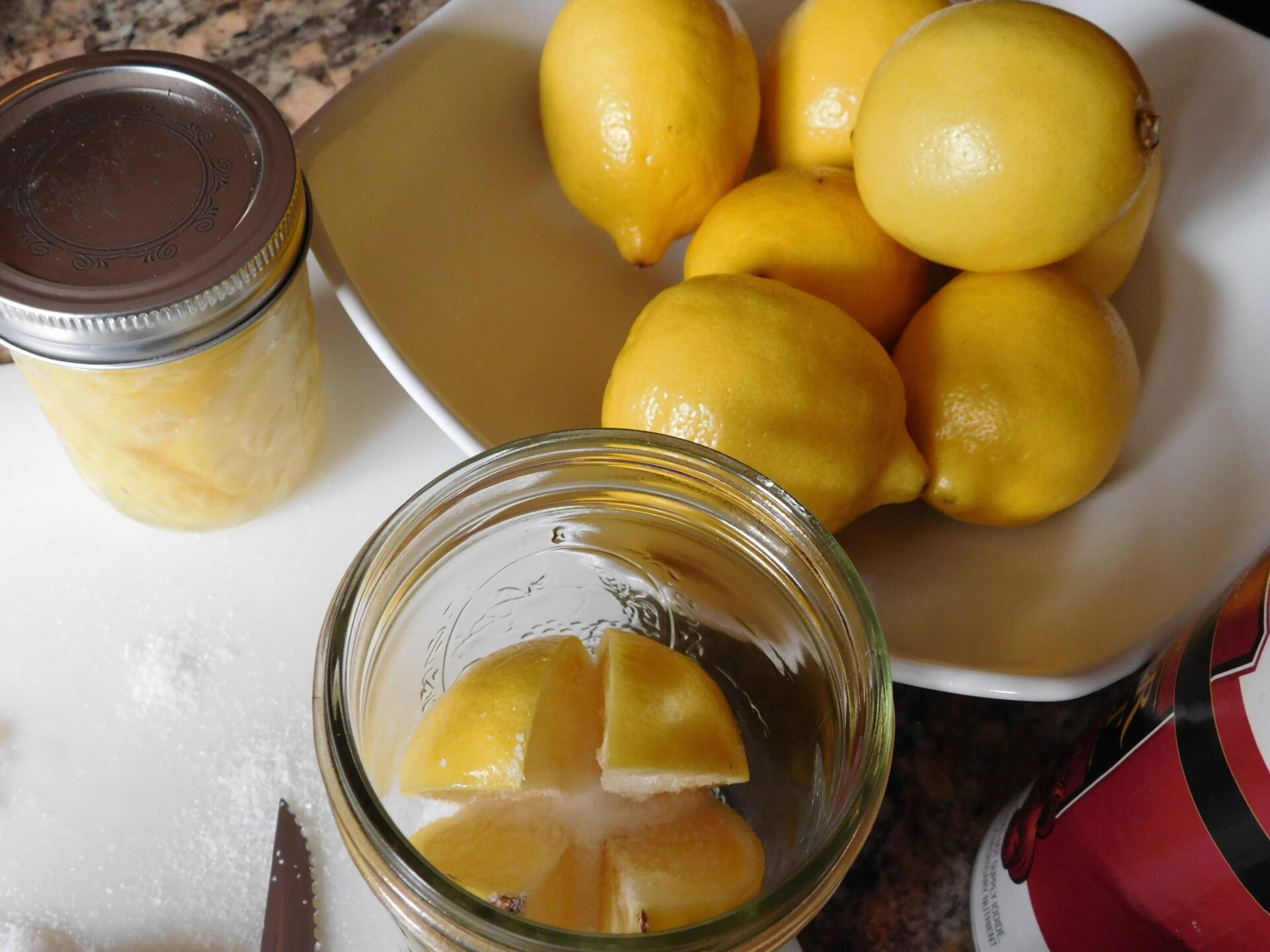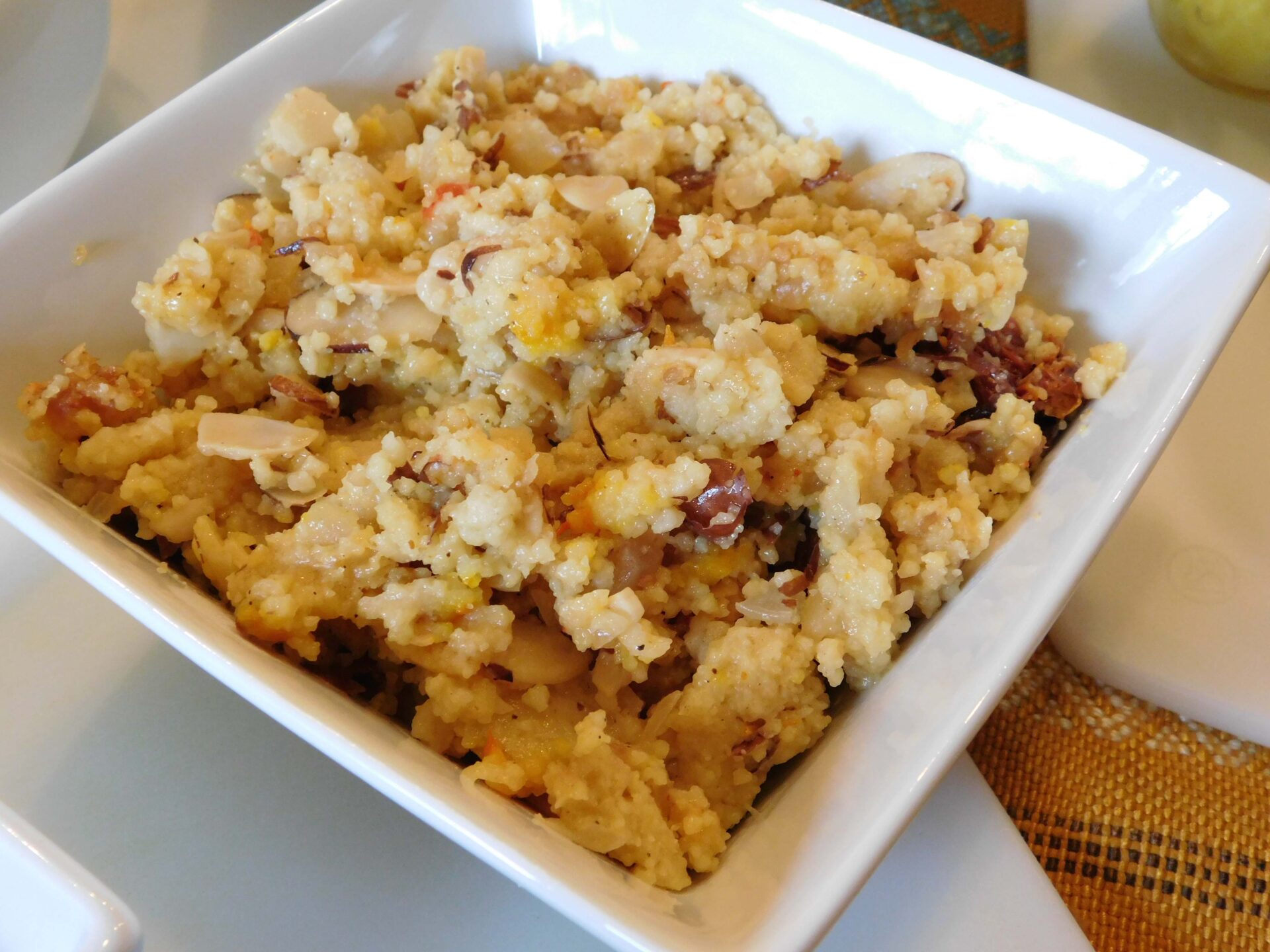Eating Oxford
On Cooking Southern: Not-So-Weird Science Adds Zest to Winter Meals
SOUTHERNISM OF THE WEEK
Loud: Adverb describing a state or condition of being noisy or over-bold in some way, whether visual or olfactory; as in “That body spray is so loud it would scare off a skunk”; or “He’s about as loud as Grandpa’s juke-joint tie.”
January is one of those months that seem to fly by. It’s when we have to tidy up after a season of festivities, say goodbye to another year of football mania, replace worn-out bed linens, and (some of us) scramble to make tax-related sense of a year’s worth of cached receipts.
My hubby and daughter love January. Mandatory annual New Year-related tasks such as filing 1099’s, W-2 forms, and taxes appeal to their left-brain-centered craving for orderliness and control. Their sensibilities thrive on throwing stuff away and producing year-end reports.
But for me and my chip-off-the-old-block, right-brained son, those mundane tasks hold little appeal. We ADD-ADHD types are constantly seeking the stimulus of attempting something new. Heaven forbid we should complete a task the same way twice.
Perhaps that’s one reason why I love to cook. Good cookery is a sensory exercise in creativity, rooted in science and basic survival skills.
Young cooks today are enthusiastic about learning traditional “survivalist” food techniques of preserving, curing, drying, canning and freezing fruits, produce and meats. Since pre-electrification times, salt and sugar have been essential ingredients for curing and preserving our Southern foods. Not surprisingly, these were two of the staples in shortest supply for both North and South during the American Civil War.
In deference to research I’ve been conducting on the topic, and in homage to my January need for creativity, this week’s recipes include a simple and classic lesson on making salt-preserved lemons. What better time to experiment with the beautiful citrus currently for sale in our grocery stores… And what better condiment to use in flavoring a stew on a cold January night!
PRESERVED LEMONS
Dating back to the North African Maghreb and Egypt, and also popular historically in South Asia, preserved lemons became a popular condiment in the West. Recipes for preserved lemons appear in 18th and early 19th century cookbooks in America (Mary Randolph’s 1824 Virginia cookbook) and in England. One finds preserved lemons most commonly in Moroccan Chicken or meat stews. But they work well in vinaigrettes and barbecue as well. The Moroccan Jewish safir version includes exotic spices such as 1 cinnamon stick, 3 cloves, 5 to 6 coriander seeds, 3 to 4 peppercorns and 1 bay leaf, layered between the squashed salted lemons. This version requires 30 days for ripening.
4 half-pint jars (or pint jars)
8 large lemons (Meyer lemons are best)
Coarse kosher salt (start with a cup in a large bowl)
Fresh lemon juice
BEST METHOD: Use pint jars. Quarter each lemon but leave the one end intact. Open up and spread a half tsp salt inside. Place a half tsp salt on bottom of pint jar and squeeze quartered lemon down onto it, split side down. Repeat until jar is full. Top with lemon juice.
USUAL METHOD: Using half-pint jars; spread up to 1 teaspoon of salt in the bottom of each jar. Cut each lemon into 8 wedges. Toss each wedge in the salt to coat. Pack wedges tightly in sterilized glass half-pint jars. Cover wedges with fresh lemon juice. It is essential for the lemons to be completely covered with salted lemon juice to ferment properly. Screw jar cap on tight.
Cover jars with a towel in a dry, dark corner of the kitchen. Shake and rotate each jar daily during the first week. Place in a dark, dry location such as the pantry for 2 to 4 additional weeks to cure. To use, rinse the lemons under running water to remove excess salt and white brine.
Preserved lemons will keep up to a year; the pickling juice can be used two to three times. Don’t worry if a lacy, white substance clings to preserved lemons in their jar; simply rinse it off before using the lemons.
MOROCCAN CHICKEN WITH PRESERVED LEMONS
Classic Moroccan Chicken is made in a tagine, a two-piece clay cooking system consisting of a shallow pot with a conical, domed lid containing a steam hole at the top. Feel free to use a Dutch oven or lidded braiser if you (like most of us) lack a tagine. Substitute fresh lemons if unwilling or unable to make preserved lemons. Try to use Meyer lemons, which are naturally sweeter than regular lemons available in our markets.
2 tsp paprika
2 tsp ground cumin
1 tsp ground ginger
1 tsp ground turmeric
1/2 tsp ground cinnamon
1/4 tsp black pepper
1/2 tsp kosher salt
3-lb pkg of chicken breasts or thighs, or combo of both
2 T extra light olive oil
3-4 cloves garlic, minced
1 white or yellow onion, chopped
Rind of 1 preserved lemon (8 wedges), rinsed, pulp removed, patted dry
1 c olives, pitted and halved (I use mixed olives)
1 c water
2 T lemon juice
Chopped cilantro and parsley for garnish
Combine all the spices in a bowl and whisk to blend completely. Set aside.
Rinse and pat dry the chicken pieces. In a pan, sprinkle the chicken with all of the spice blend, coating completely. Cover and refrigerate for about an hour.
Heat oil in a skillet and sauté the garlic and onion until transparent. Add the pieces of chicken on top of the onion in the hot skillet. Sear the chicken pieces, turning on all sides until completely browned. Cover for about 10 minutes, then add the water, lemon peel slices and olives. Lower heat to medium-low and cover, braising for about 30 minutes until chicken is tender.
Remove chicken to a plate and stir up the fond (stuck-on bits of chicken and sauce). Add lemon juice and stir. Simmer uncovered about 5 minutes to thicken. Position chicken in a serving dish or platter and pour sauce over the chicken. Serve with couscous, rice, or mashed potatoes.
MOROCCAN COUSCOUS
Couscous is a semolina pasta usually made up from crushed durham wheat, but sometimes of barley, pearl millet, or (in Brazil) cornmeal. Developed by the Berbers of the North African Maghreb, it is a staple starch used like rice as a platform for vegetables and stews. Spread in popularity from Tunisia, Algeria, Morocco and Libya to the Mediterranean basin and Middle East, couscous also is served as a dessert, sweetened with butter, almonds, cinnamon, sugar and milk or buttermilk. Couscous is best when steamed to a fluffy texture, rather than over-boiled to a gummy texture. Like other pasta, it swells when stored overnight in the fridge. Most couscous sold in the United States is precooked, and requires minimal steaming or boiling.
2-1/4 c water
1 heaping c couscous
2 T olive oil
1 c chopped onion
6 cloves garlic, minced
1/2 tsp kosher salt
1/4 tsp ground black pepper
1 c sliced almonds
3-oz pkg sundried tomatoes in olive oil
2 to 3 c vegetable stock, divided 2 and 1
3 T fresh lemon juice
2 carrots, chopped, optional
1 zucchini, chopped, optional
Pinch of saffron, optional
Bring water to a boil in a medium saucepan. Add couscous to boiling water and cook until couscous absorbs all water and is cooked through to fluffy stage – about 10 to 15 minutes.
Heat olive oil in a skillet over medium heat. Add onion and garlic, season with salt and pepper, and cook until transparent. Stir in the sundried tomatoes and almonds; simmer about 5 minutes. Pour in 2 cups of vegetable broth and if using, add optional veggies. Simmer about 5 minutes until liquid reduces, and stir in couscous and additional vegetable stock.. Cover and remove from heat. Let stand about 10 minutes before serving.
Laurie Triplette is a writer, historian and accredited appraiser of fine arts, dedicated to preserving Southern culture and foodways. Author of the award-winning community family cookbook GIMME SOME SUGAR, DARLIN’, and editor of ZEBRA TALES (Tailgating Recipes from the Ladies of the NFLRA), Triplette is a member of the Association of Food Journalists, Southern Foodways Alliance and the Southern Food and Beverage Museum. Check out the GIMME SOME SUGAR, DARLIN’ website and follow Laurie’s food adventures on Facebook and Twitter.
Follow HottyToddy.com on Instagram, Twitter and Snapchat @hottytoddynews. Like its Facebook page: If You Love Oxford and Ole Miss…

































